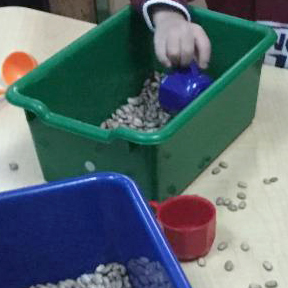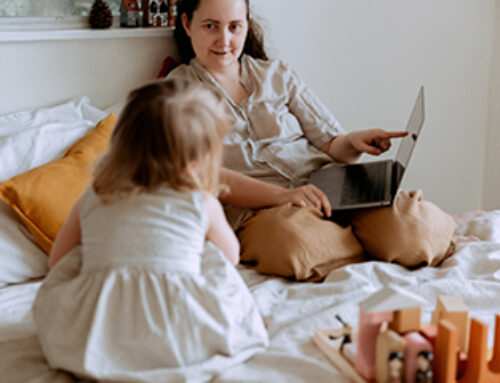As a parent of a child with autism, you are familiar with meltdowns and how to manage and support your kiddo through them. With the Shelter in Place order in effect, all parents are probably feeling a bit tenser and have lower frustration tolerance. That is okay! Your kiddo doesn’t need a perfect parent; they need a loving, present, and patient one.
Changes in routine can often trigger or exacerbate meltdowns. COVID-19 and its effects on the nation are out of our control. How you respond to your child’s meltdown during this unpredictable time is! Below are some tips and refreshers on how to help you and your child during a meltdown.
- Stay Calm! You know your child best and even during these unprecedented times, you’ll make it to the other side.
- Make Your Child Feel Safe: Remove any triggers and do your best to create a quiet and cozy environment for them. This may also look like turning the music or TV off or offering them their favorite blanket. You also want to practice empathy during meltdowns. Empathy means listening and acknowledging their struggle without judgment. Our job is to gently guide our kids and give them the tools to express themselves in a way that doesn’t hurt their bodies or others. When we empathize with our kids and validate their experience, they feel heard.

- Remove Any Dangerous Objects: Kids lose control of their bodies during meltdowns so make sure to remove any dangerous objects or bring them to a space that is free of clutter and other people.
- Stop Talking: Asking your child what’s wrong or telling them to do something over and over usually makes the meltdown worse. Take a deep breath, stop talking, and use gestures like pointing at an object, shaking your head no, using pictures, or showing your child different options. Bring language back when your child has regained control.
- Try Offering a Preferred Sensory Activity: Kinetic sand, sensory bin, bubbles, or water play are all great options!

- Try Heavy Work: Heavy work puts stress on the body and provides sensory input, and it can be really calming for autistic children who are in meltdown mode.
- Deep Pressure: Your child may need proprioceptive input during this time. The proprioceptive systems help our bodies understand where they are in space. Deep pressure can include a weighted blanket, compression clothing, or even squeezes and a big bear hug!
- Deep Breathing: Telling a child in the middle of a meltdown to take a deep breath probably won’t work! But you can try to encourage them to blow bubbles, pretend to blow out candles on a birthday cake, or Rainbow breathing. It is important to note that deep breathing work takes practice, so you’ll want to practice deep breathing with your child when they are regulated in hopes that they utilize these techniques later when needed.

- Try Something From your Sensory Tool Kit: Noise-canceling headphones, a weighted lap pad, sunglasses, or fidgets can be helpful. Don’t force these on your child when they’re melting down, but if they choose to use them, these products can often help them calm down.
It will also be important to teach and practice coping strategies when your child is regulated and calm. The strategies above take practice and children need to learn how to cope with big emotions and self-regulate through consistent practice and positive reinforcement.
A few final thoughts…
Remember that during a sensory meltdown, children have very little control over their behavior. It is difficult to see your child lose control of their body but remember they are experiencing sensory overload during these times. The most important thing to try and do during a meltdown is to make sure your kiddo is safe and help them regain their composure
It is also helpful to recognize that a meltdown is not a tantrum. It can be easy to chalk a meltdown up to bad behavior. Meltdowns are not intentional. Meltdowns are a complete loss of control and they are no one’s fault.

Blue Bird Day fosters socialization, sensory regulation, and pre-academic learning in children ages 2-7 years in therapeutic rotations that simulate preschool and kindergarten settings. Our compassionate therapists practice a relationship-based and family-centered approach, provide parent training, and collaborate on goals and individualized intensive treatment plans for your child.
We believe in a collaborative and multi-disciplinary team approach to therapy. A team of occupational therapists, speech-language pathologists, dietitians, developmental therapists, behavioral therapists, physical therapists, and therapeutic assistants are created for each child to ensure child and family are fully supported and the best possible results are achieved.
Options for individualized, group and virtual therapy sessions are available as well.
Want to learn more or you have a specific question? Feel free to connect with us here!



